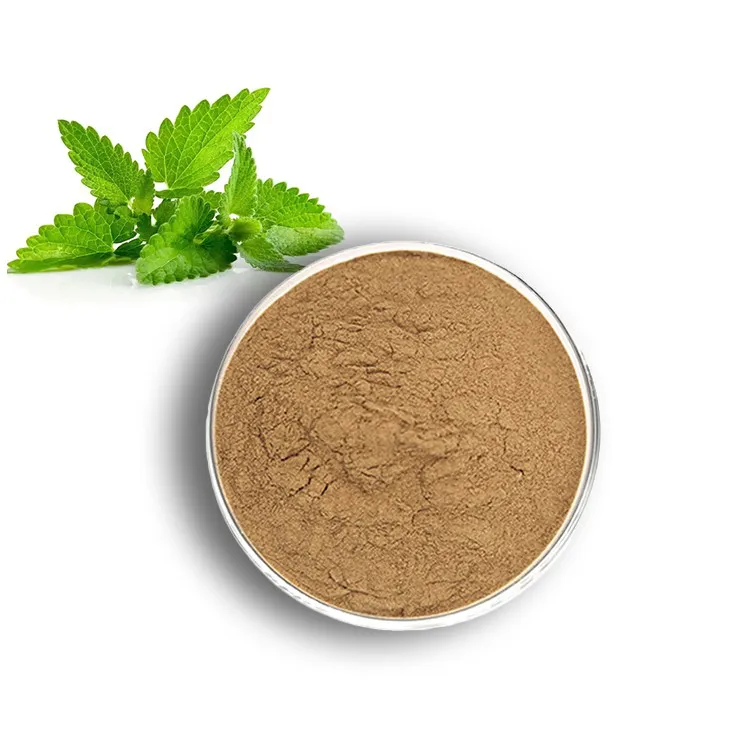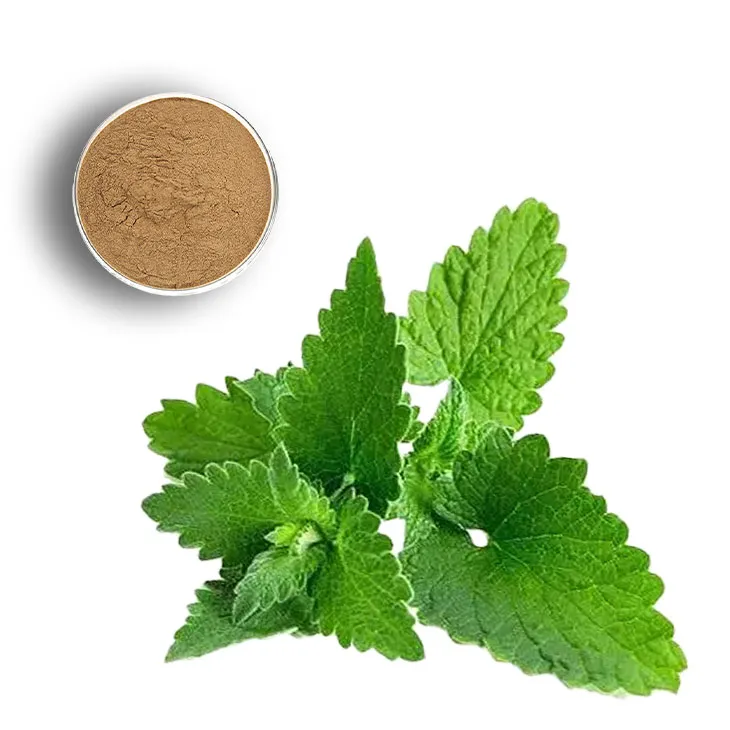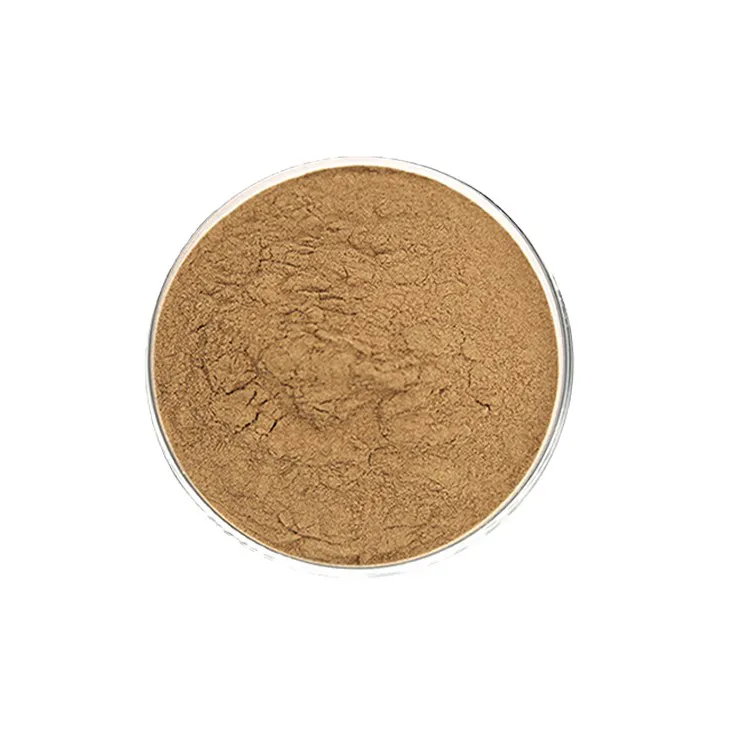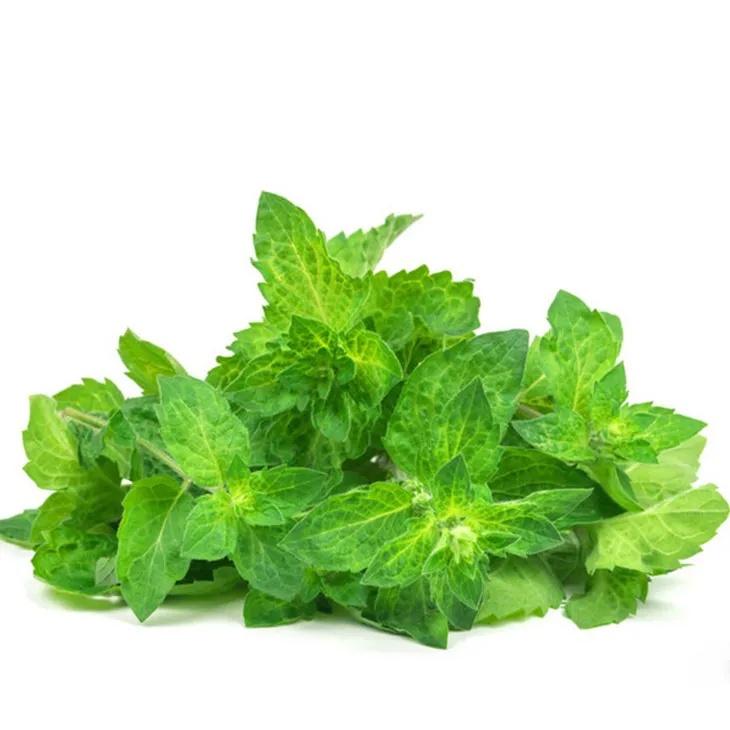- 0086-571-85302990
- sales@greenskybio.com
How to make powder from lemon balm extract?
2024-11-26

1. Introduction
Lemon balm (Melissa officinalis) is a herbaceous plant that has been used for centuries in traditional medicine. Its extract is rich in various bioactive compounds such as polyphenols, flavonoids, and essential oils, which are associated with numerous health benefits including relaxation, digestion improvement, and antioxidant properties. Transforming the Lemon Balm Extract into powder form can increase its stability, ease of storage, and expand its potential applications in the food, pharmaceutical, and cosmetic industries. This article will guide you through the process of making powder from Lemon Balm Extract, covering extraction methods, drying techniques, and grinding procedures.

2. Extraction of Lemon Balm
2.1 Solvent Extraction
Materials Needed:
- Lemon balm leaves
- Solvent (e.g., ethanol, methanol, or water)
- Glass container
- Filter paper or a filtration system
- Harvest fresh lemon balm leaves. Ensure that they are clean and free from any debris or dirt. Wash them gently if necessary.
- Coarsely chop the leaves to increase the surface area for extraction. This will help the solvent to better penetrate the plant material.
- Place the chopped leaves in a glass container. Add the chosen solvent in a ratio of about 1:5 (plant material to solvent). For example, if you have 100 grams of leaves, add 500 milliliters of solvent.
- Seal the container tightly and let it sit for a period of time. This could range from a few days to a couple of weeks, depending on the solvent used and the desired concentration of the extract. Shake the container occasionally to ensure proper mixing.
- After the extraction period, filter the mixture through filter paper or a filtration system to separate the liquid extract from the solid plant material. The resulting liquid is the Lemon Balm Extract.
2.2 Steam Distillation for Essential Oil Extraction (Optional)
Materials Needed:
- Steam distillation apparatus
- Lemon balm leaves
- Receiving flask
- Place the lemon balm leaves in the steam distillation apparatus.
- Heat the water in the apparatus to produce steam. The steam will pass through the lemon balm leaves, causing the essential oils to vaporize.
- The vaporized essential oils and steam will then pass through a condenser, where they are cooled and condensed back into a liquid. This liquid, which contains the essential oils, will collect in the receiving flask.
- The resulting essential oil can be combined with the solvent - based extract obtained from the previous method if desired, to create a more comprehensive lemon balm extract.

3. Drying the Lemon Balm Extract
3.1 Air Drying
Advantages:
- Simple and cost - effective method.
- Does not require any special equipment.
- Relatively slow process, especially in humid environments.
- There is a risk of microbial growth during the long drying time.
- Pour the lemon balm extract onto a clean, flat surface such as a baking tray or a large plate. Spread it out thinly to increase the surface area exposed to the air.
- Place the tray in a well - ventilated area, away from direct sunlight. The extract should be allowed to dry naturally. Stir or turn the extract occasionally to ensure even drying.
- Depending on the humidity and temperature of the environment, this process can take several days to a week or more until the extract is completely dry and forms a solid or semi - solid mass.
3.2 Oven Drying
Advantages:
- Faster than air drying.
- Can be more controlled in terms of temperature and drying time.
- Requires an oven, which consumes energy.
- There is a risk of overheating and damaging the active compounds in the extract if the temperature is too high.
- Pre - heat the oven to a low temperature, typically around 40 - 50°C. Higher temperatures may cause degradation of the extract.
- Pour the lemon balm extract into an oven - safe container or onto a baking tray lined with parchment paper.
- Place the container or tray in the pre - heated oven. Leave the oven door slightly ajar to allow moisture to escape.
- Check the extract regularly during the drying process. The drying time can range from a few hours to a day or two, depending on the amount of extract and the oven settings.
- Once the extract is dry and has a brittle or solid consistency, remove it from the oven and let it cool.
3.3 Freeze Drying
Advantages:
- Preserves the bioactive compounds in the extract very well.
- Results in a highly porous and easily grindable product.
- Requires specialized and expensive freeze - drying equipment.
- Not very practical for small - scale or home - based production.
- Place the lemon balm extract in a freeze - drying container. Make sure the extract is spread out evenly.
- Put the container in the freeze - dryer. The freeze - dryer will first freeze the extract and then gradually remove the moisture under vacuum conditions.
- The process can take several hours to days, depending on the amount of extract and the capabilities of the freeze - dryer. Once the process is complete, the extract will be in a dry, porous state.

4. Grinding the Dried Lemon Balm Extract
4.1 Using a Mortar and Pestle
Advantages:
- Simple and traditional method.
- Does not require electricity.
- Time - consuming, especially for larger quantities of extract.
- May not achieve a very fine powder consistency.
- Place the dried lemon balm extract in a mortar. Start grinding it gently with a pestle.
- Gradually increase the pressure and continue grinding until the extract is broken down into smaller pieces.
- Keep grinding until you reach the desired powder consistency. This may take some time, and you may need to scrape the sides of the mortar occasionally to ensure all the extract is being ground.
4.2 Using an Electric Grinder
Advantages:
- Fast and efficient, especially for large - scale production.
- Can produce a very fine powder.
- Requires an electric grinder, which may not be available in all settings.
- There is a risk of overheating if used for a long time, which could potentially damage the extract.
- Place the dried lemon balm extract in the electric grinder. Make sure the grinder is clean and dry.
- Turn on the grinder and let it run for a short period. Check the consistency of the powder regularly.
- If the powder is not fine enough, run the grinder for a bit longer. However, be careful not to over - grind, as this could lead to overheating.
- Once the desired powder consistency is achieved, turn off the grinder and remove the powder.

5. Storing the Lemon Balm Powder
Container Selection:
- Use an airtight container such as a glass jar or a high - quality plastic container. This will prevent moisture absorption and protect the powder from air - borne contaminants.
- Store the powder in a cool, dry place, away from direct sunlight. A pantry or a cupboard is usually a suitable location.
- If possible, store the powder in a refrigerator or a freezer for long - term preservation, especially if you want to maintain the highest level of bioactivity of the extract.
6. Conclusion
Making powder from lemon balm extract involves several important steps, from extraction to drying and grinding. Each step has its own considerations in terms of equipment, time, and the quality of the final product. By carefully following these procedures, you can successfully transform lemon balm extract into a convenient powder form that can be used in various applications. Whether for personal use in home - made remedies or for commercial production in the food, pharmaceutical, or cosmetic industries, the lemon balm powder offers a versatile and potentially beneficial ingredient.
FAQ:
What are the common extraction methods for lemon balm extract?
There are several common extraction methods for lemon balm extract. One is the solvent extraction method, where solvents like ethanol or water are used to dissolve the active components from the lemon balm. Another method is steam distillation, which is mainly used to extract the essential oils present in the lemon balm. Maceration is also a traditional method where the plant material is soaked in a solvent for a period of time to extract the desired substances.
How should lemon balm extract be dried before making it into powder?
Before making lemon balm extract into powder, proper drying is crucial. One can use air - drying, which involves spreading the extract in a thin layer in a well - ventilated area. Another option is using a low - temperature drying oven. The temperature should be set low enough (usually around 40 - 50°C) to avoid damaging the active components. Dehydrators can also be used, which provide a controlled drying environment.
What equipment is needed for grinding lemon balm extract into powder?
To grind lemon balm extract into powder, a mortar and pestle can be used for small - scale grinding. However, for more efficient and finer grinding, a coffee grinder or a dedicated herb grinder is often preferred. These tools can break down the dried extract into a fine powder. Some commercial powder mills are also available for larger - scale production.
Are there any precautions when making powder from lemon balm extract?
Yes, there are several precautions. Firstly, ensure that all the equipment used for extraction, drying, and grinding is clean and sterilized to avoid contamination. Secondly, during drying, monitor the temperature closely to prevent overheating which can degrade the active compounds. Also, when grinding, avoid over - grinding which may cause excessive heat generation and affect the quality of the powder.
What are the potential uses of lemon balm extract powder?
Lemon balm extract powder has multiple potential uses. It can be used in the food industry as a flavoring agent, adding a lemony and herbal flavor to various products. In the cosmetic industry, it may be added to skincare products for its antioxidant and soothing properties. In the pharmaceutical and herbal medicine fields, it can be used for its potential calming and anti - anxiety effects.
Related literature
- The Extraction and Applications of Lemon Balm Extracts"
- "Lemon Balm: From Plant to Powder - A Comprehensive Review"
- "Advanced Techniques in Processing Lemon Balm Extract into Powder"
- ▶ Hesperidin
- ▶ citrus bioflavonoids
- ▶ plant extract
- ▶ lycopene
- ▶ Diosmin
- ▶ Grape seed extract
- ▶ Sea buckthorn Juice Powder
- ▶ Beetroot powder
- ▶ Hops Extract
- ▶ Artichoke Extract
- ▶ Reishi mushroom extract
- ▶ Astaxanthin
- ▶ Green Tea Extract
- ▶ Curcumin Extract
- ▶ Horse Chestnut Extract
- ▶ Other Problems
- ▶ Boswellia Serrata Extract
- ▶ Resveratrol Extract
- ▶ Marigold Extract
- ▶ Grape Leaf Extract
- ▶ blog3
- ▶ blog4
-
The best yohimbe bark extract on the market.
2024-11-26
-
Standard - process Mulberry Leaf Extract.
2024-11-26
-
100% Pure Natural White Willow Bark Extract.
2024-11-26
-
The Best Method for Extracting Vitamin D3.
2024-11-26
-
Chinese Lycopene Powder Factories.
2024-11-26
-
Agaricus Blazei Extract
2024-11-26
-
Acai Berry Extract
2024-11-26
-
Oat Straw Extract Powder
2024-11-26
-
Cactus Extract
2024-11-26
-
Cranberry Extract
2024-11-26
-
Selenium yeast
2024-11-26
-
Purple Sweet Potato Extract
2024-11-26
-
Coconut Water Powder
2024-11-26
-
Horse Chestnut Extract
2024-11-26
-
Milk Thistle Extract
2024-11-26





















